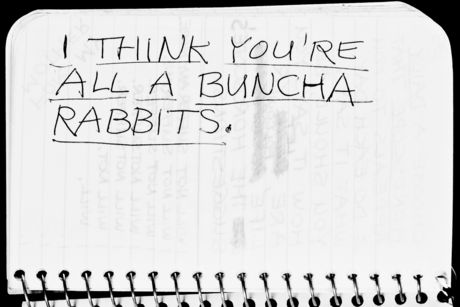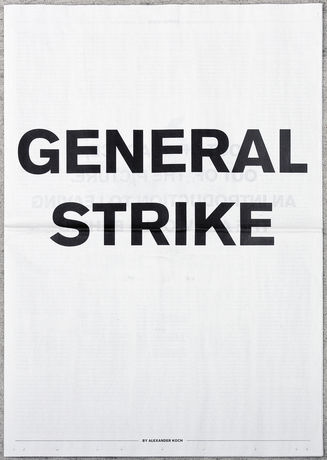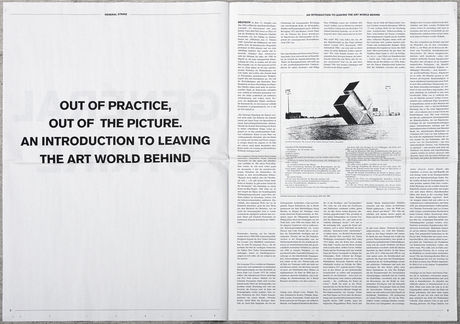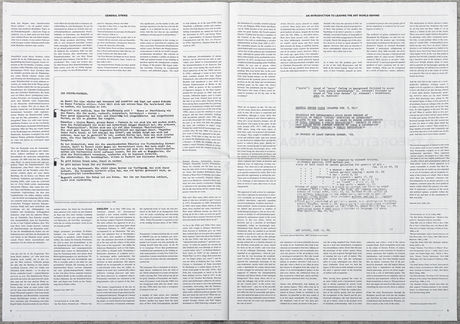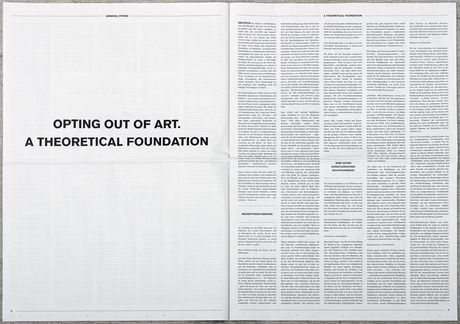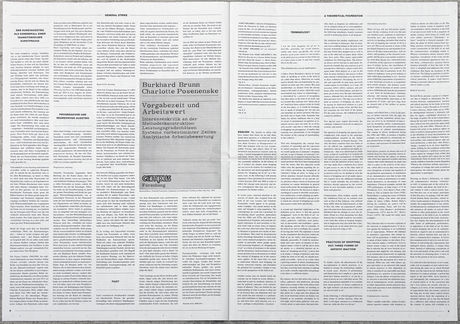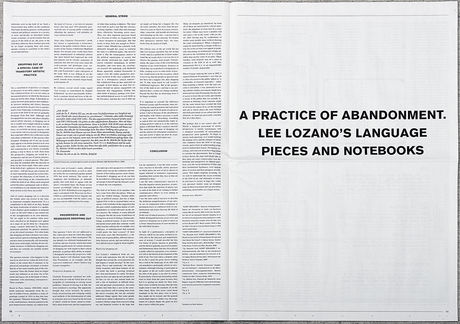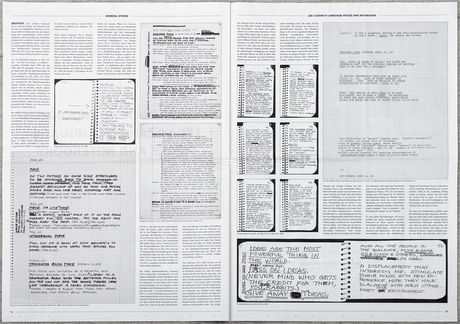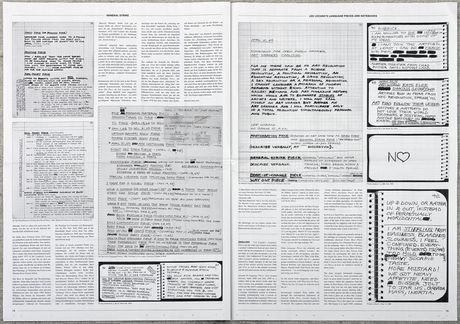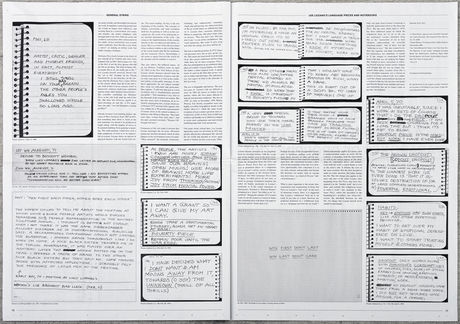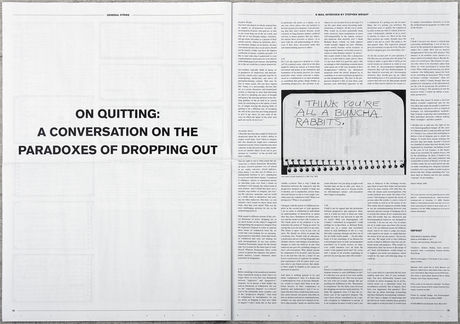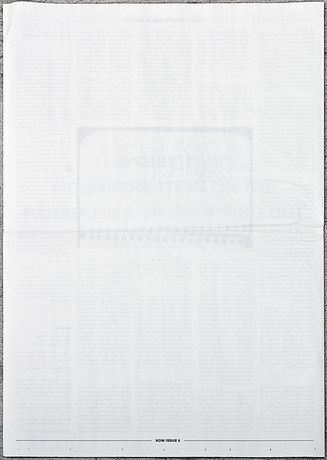KOW ISSUE 8
GENERAL STRIKE. Lee Lozano, Charlotte Posenenske et al
Publication by Alexander Koch
Released Apr 30, 2011
Publication by Alexander Koch
Released Apr 30, 2011
Artists are positively expected to criticize the society in which they live. Criticizing art—the market, the institutions, the role of the creative outsider in which many people like to cast them—is likewise a conventional part of what they do; in Institutional Critique, it has even become the central feature of a distinct art movement. But what happens when artists go so far as to criticize not just individual features of the art world but art as a whole? When they lose faith in art, lay down their tools, and leave the field of art? Not because they have failed; not because success has proven to be elusive; but because they hope to find a perspective for their commitments, their social and political utopias, or simply a happier life elsewhere?
How many former artists do we know who voluntarily turned their backs on art? Charlotte Posenenske and Lee Lozano are two such art dropouts who have risen to posthumous popularity in recent years. Cady Noland, Laurie Parsons, and Eugen Schönebeck likewise went off the grid. But how many others have done the same, and for how long has this been going on? No one has counted. Art historians have always been interested in the origins and beginnings of artistic practices—but whether, how, and why such practices might also come to an end, they have failed to note. It almost seems as though artists were afforded the right to rebel, to fail, and to die as well—but not the right to simply get out while still alive.
And so the act of “dropping out of art” has remained an unwritten chapter of the history of art. GENERAL STRIKE sketches a first draft of this missing chapter. In four essays, the publication lays the systematic foundation for a theory and history of the withdrawal from art. Inevitably limiting itself to key moments and essential aspects, it traces the artistic general strike back to the early nineteenth century, and proposes a suitable terminology in order to enable art historians to get a grasp of the phenomenon. And it inquires into the consequences for the social role of artists if public audiences were to take an interest in, and acknowledge, the move from artistic practices toward other fields of social engagement.
Based on the “Language Pieces” and private notebooks of the American artist Lee Lozano (1930–1999), the publication reconstructs the rare instance of a distinctive last complex of works by the artist herself that directly documents the withdrawal from art—a set of works, incidentally, that has brought the artist posthumous fame as a pioneer of conceptual art. Drawing on materials that have in some cases never been published before, the discussion also seeks to counteract the tendency to mythologize Lee Lozano’s withdrawal. A comparison between Lozano and Posenenske finally serves to delineate the motivations and the critical thrust of individual movements of withdrawal more precisely.
GENERAL STRIKE seeks to show that dropping out of art, a step that many have taken even if it has generally gone unremarked, sheds light on the fundamental doubts artists may have about art or the social structure of the field of art, doubts that were particularly widespread in times of political or cultural upheaval such as the years around 1917, 1968, and 1989. In some instances, the withdrawal from art can itself become a special case of critical artistic practice: as a temporary and transitory practice that emancipates itself from debilitating conditions in order to seek out alternative options for action beyond the bounds of art.
GENERAL STRIKE is published as the eighth contribution to KOW ISSUES, a sequence of projects in varying formats that explore the social and political implications of artistic practices.
Conception, texts, and graphic design: Alexander Koch
How many former artists do we know who voluntarily turned their backs on art? Charlotte Posenenske and Lee Lozano are two such art dropouts who have risen to posthumous popularity in recent years. Cady Noland, Laurie Parsons, and Eugen Schönebeck likewise went off the grid. But how many others have done the same, and for how long has this been going on? No one has counted. Art historians have always been interested in the origins and beginnings of artistic practices—but whether, how, and why such practices might also come to an end, they have failed to note. It almost seems as though artists were afforded the right to rebel, to fail, and to die as well—but not the right to simply get out while still alive.
And so the act of “dropping out of art” has remained an unwritten chapter of the history of art. GENERAL STRIKE sketches a first draft of this missing chapter. In four essays, the publication lays the systematic foundation for a theory and history of the withdrawal from art. Inevitably limiting itself to key moments and essential aspects, it traces the artistic general strike back to the early nineteenth century, and proposes a suitable terminology in order to enable art historians to get a grasp of the phenomenon. And it inquires into the consequences for the social role of artists if public audiences were to take an interest in, and acknowledge, the move from artistic practices toward other fields of social engagement.
Based on the “Language Pieces” and private notebooks of the American artist Lee Lozano (1930–1999), the publication reconstructs the rare instance of a distinctive last complex of works by the artist herself that directly documents the withdrawal from art—a set of works, incidentally, that has brought the artist posthumous fame as a pioneer of conceptual art. Drawing on materials that have in some cases never been published before, the discussion also seeks to counteract the tendency to mythologize Lee Lozano’s withdrawal. A comparison between Lozano and Posenenske finally serves to delineate the motivations and the critical thrust of individual movements of withdrawal more precisely.
GENERAL STRIKE seeks to show that dropping out of art, a step that many have taken even if it has generally gone unremarked, sheds light on the fundamental doubts artists may have about art or the social structure of the field of art, doubts that were particularly widespread in times of political or cultural upheaval such as the years around 1917, 1968, and 1989. In some instances, the withdrawal from art can itself become a special case of critical artistic practice: as a temporary and transitory practice that emancipates itself from debilitating conditions in order to seek out alternative options for action beyond the bounds of art.
GENERAL STRIKE is published as the eighth contribution to KOW ISSUES, a sequence of projects in varying formats that explore the social and political implications of artistic practices.
Conception, texts, and graphic design: Alexander Koch
With the kind support of The Estate of Lee Lozano and Hauser & Wirth
